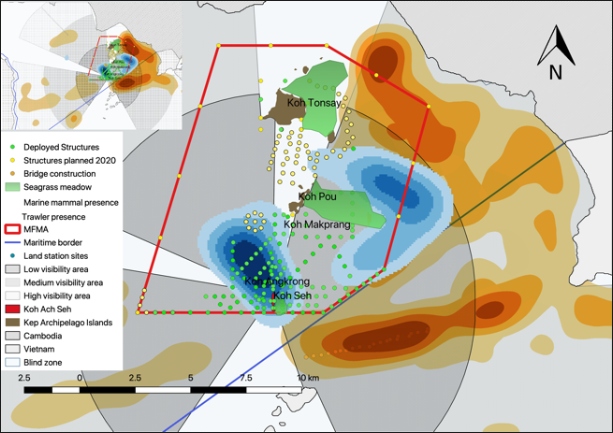After the establishment of Kep’s first Marine Fisheries Management Area (MFMA) in 2018,
We officially started the deployment of our Conservation and Anti-Trawling Structures (CANTS), also known as conservation structures or “blocks” within the MFMA.
The Conservation structures are multifaceted, Designed to allow free flow of water movement, whilst giving the largest possible surface area to encourage the growth of filter feeders, These structures very quickly begin to work as underwater filters, whilst providing homes, habitat and safety in areas stripped of life by Bottom trawling.
The structures are low cost, simple in design and can be built by local communities, Since 2018 we have been requested by a number of local communities in Kep and Kampot to Deploy Structures within their communities fisheries areas. The communities follow the simple design and make the blocks, then our team assists in deploying them as structures underwater.
We welcome all donations of tools and materials. If you are interested in sponsoring, please let us know!
De-structuring the problem
The original design of the Habitat Restoration and Anti-Trawling Structures, was to passively stop and hinder the encroachment of illegal trawlers within the MFMA.
Bottom trawling is the number one cause of both habitat destruction and the current collapse of Cambodias inshore fisheries. It has been the most significant factor in the devastation marine life specifically within the Kep Archipelago.
Even after co-establishing Kep’s first Marine Fisheries Management Area in 2018. Illegal trawling and destructive fishing activities were still a recurring problem.
Just having protections in legislation and written on pieces of paper is not enough. On ground implementation of active measures must be taken.
Facing a shortage on manpower and our ability to patrol impaired. We needed more non-confrontational tools to defend against the bottom trawlers.
Our surveys and marine research showed that the trawled areas had lost their ability to regenerate. Most of the benthic habitats (e.g., seagrass, seaweed and bivalve reefs) had been destroyed. This affected not just the environment but also the livelihood of the local small-scale fishermen.
The Habitat Restoration Structures were designed to be multi-faceted. Including aspects such as: not impairing water movement, providing the largest possible area for recruitment of filter feeders, providing areas for breeding and protection of juvenile marine life.
The overall design was refined over the few first years to become what it is today. Each structure has effectively become an underwater filter, improving water quality. Providing safe breeding and nursing areas. And maintaining an active presence to deter the most destructive of the habitat destroying fishing methods, bottom trawling.
Achievement highlights

1. Recorded first avoidance behaviour by trawlers in 2019
2. Continuous increase in species abundance post-deployment, including increase in marine mammal sightings


3. Seagrass regrowth and increase in fish stock and reported catch by fishermen
4. Recorded recolonization of mussels and oysters

Restructuring conservation
Although the deployment process of these conservation structures may appear complicated, in concept they are just a simple interlocking design using concrete blocks.
The individual concrete blocks are easy to make, transport and carry. But after deployment, the assembled structure becomes robust, heavy, adaptable, height-adjustable, and is even strong enough to snag and entangle a passing trawler net.
At the same time, the alternating placement of these blocks creates microhabitats such as crevices and holes that still remain intact even after repeated trawling. It serves as an artificial refuge for the remaining marine life.
After many repeated deployments, these conservation structures collectively harbour the recovery of pioneer seagrass and bivalves.
Then the fishes.
Then seahorses.
And turtles.
And eventually even marine mammals!
These “concrete Jengas” are literally the building blocks of our conservation projects.
